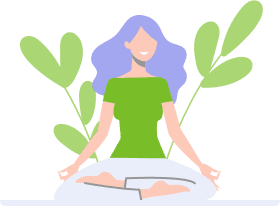This has an added effect of driving down your net income for the period. In the equation above, beginning inventory reflects the total value of whatever inventory you carried over from the previous accounting period. This could be the prior year, quarter, or month, depending on how frequently you calculate COGS. Likewise, ending inventory reflects the total value of whatever inventory remains unsold at the end of the accounting period, which you will carry over into the next. LIFO assumes that the first socks you sell are the last socks you purchased. Since you sold 400 pairs, the first 300 cost $10 each, and the next 100 cost $5 each.
Each method has its advantages and implications for COGS calculation and tax obligations, so it’s essential to choose wisely and stick with the chosen method. Once calculated, COGS appears as a direct expense below revenue on the income statement, impacting gross profit. Enerpize is an all-in-one online accounting software designed to streamline financial management for businesses of all sizes.
Ending inventory is the value of inventory at the end of the year. Learn marketing techniques that can enhance efficiency and drive business growth. Let’s break it down step by step with formulas and real-world examples to make it easy to grasp. Tally up what you spend on new inventory—fuel deliveries, snack orders, even those extra straws. We’ll walk through it with a real-world example—say, a typical month at your c-store or gas station. Cost of goods sold is also an important figure for auditing purposes because it offers transparency over cost and earnings.
Some service companies may record the cost of goods sold as related to their services. But other service companies—sometimes known as pure service companies—will not record COGS at all. The difference is some service companies do not have any goods to sell, nor do they have inventory. But to calculate your profits and expenses properly, you need to understand how money flows through your business.
Calculating COGS using LIFO
The cost of goods sold applies only to businesses that sell products. If your business is service based (like a psychology clinic or legal team), your direct costs don’t come from sales of goods. Instead, your direct costs are any expenses related directly to your service. For instance, an outsourced accounting company would likely include its accounting software subscription as part of its direct costs.
Step 4: Apply the COGS Formula
- Poor assessment of your COGS can impact how much tax you’ll pay or overpay.
- If your business is U.S.-based, you’ll need to fill out IRS Form 970 before switching to LIFO (you can’t use LIFO in Canada or any other IFRS country).
- It involves a simple formula and can be calculated monthly to keep track of progress or even less frequently for more established businesses.
- Count it all and calculate what you paid (your cost, not the selling price).
In almost all cases, the metric cost of goods sold (COGS) is the best way to measure these expenses. Below, you’ll learn how to calculate COGS, including automatically via accounting software. Cost of goods sold does not include costs unrelated to making or purchasing products for sale or resale or providing services. General business expenses, such as marketing, are often incurred regardless of if you sell certain products and are commonly classified as overhead costs.
Understanding the COGS formula
Using LIFO, the jeweler would list COGS as $150, regardless of the price at the beginning of production. Using this method, the jeweler would report deflated net income costs and a lower ending balance in the inventory. Operational costs such as marketing, sales force expenses, and after-sales support are not included in COGS. These costs can be substantial and are vital for driving sales and supporting the product’s market position. By not including these costs, COGS overlooks essential aspects of the total cost of delivering a product to market.
But it also helps determine how efficiently you are running your business. Can you afford to update tools or renovate your business space? These are all questions where the answer is determined by accurately assessing your COGS. Both the Old UK generally accepted accounting principles (GAAP) and the current Financial Reporting Standard (FRS) require COGS for Income Tax filing for most businesses.
Net Income and Taxes
Operating expenses (OPEX) are the indirect costs your business incurs that aren’t directly tied to production. SG&A expenses also count as operating expenses or indirect costs on your income statement. In service-oriented businesses, where direct costs of services (like labor) may not be as clearly definable as in manufacturing, COGS becomes a less effective metric. In these cases, comprehensive cost accounting methods that can allocate overhead and administrative costs more accurately are more informative.
The averaging method for calculating COGS is a technique that doesn’t consider the specific cost of individual units. It also doesn’t matter what was purchased when or how inventory costs fluctuate. Instead, businesses using the averaging method establish an average per unit cost and then multiply that average by the number of units sold during a particular period to determine COGS. While there’s only one formula for calculating COGS, companies can choose from several different accounting methods to find their specific cost. Each method is a different way of calculating the cost of the specific items sold in a given period.
COGS only applies to those costs directly related to producing goods intended for sale. At the bottom of the sheet, you’ll subtract your expenses from your revenue to list your net profit. To find the COGS, a company must find the value of its inventory at the beginning of the year, which is the value of inventory at the end of the previous year. The cost of goods made or bought adjusts according to changes in inventory. For example, if 500 units are made or bought, but inventory rises by 50 units, then the cost of 450 units is the COGS. If inventory decreases by 50 units, the cost of 550 units is the COGS.
- The ending inventory is the value of unsold goods remaining at the end of the period.
- Cost of goods sold is also an important figure for auditing purposes because it offers transparency over cost and earnings.
- It’s a key figure in calculating gross profit and understanding a company’s profitability, especially for businesses like retail stores, convenience stores, or gas stations.
- However, a physical therapist who keeps an inventory of at-home equipment to resell to patients would likely want to keep track of the cost of goods sold.
- Cost tracking is essential in calculating the correct profit margin of an item.
Cost of goods sold formula
FreshBooks offers COGS tracking as part of its suite of accounting features. It can computing cost of goods sold help you track and categorise your expenses more accurately. Accurate records can give you peace of mind that you are on track come reporting time.
The IRS has a long article about COGS, but it’s always a good idea to consult a CPA to ensure you’re not missing out on any deductions. They can look at complex things like rent, mortgage interest and utilities, and figure out how to assign a percentage to each of the products in your inventory. It’s the sum total of the money you spent getting your goods into your customer’s hands—and that’s a deductible business expense. The more eligible items you include in your COGS calculation, the lower your small business tax bill.
This is everything you have in stock at the start of the month—fuel in the tanks, candy on the racks, coffee cups in the back. Count it all and calculate what you paid (your cost, not the selling price). Through the COGS period, you purchase wool and cotton to make more items, along with additional items such as elastic and pre-made logos. Different accounting treatments can also yield different results of running the cost of goods sold formula. Businesses should maintain detailed inventory records, clearly allocate costs between COGS and OPEX, and retain documentation to support their calculations in case of tax scrutiny.
In addition, the cost of goods sold calculation must factor in the ending inventory balance. If there is a physical inventory count that does not match the book balance of the ending inventory, then the difference must be charged to the cost of goods sold. The beginning inventory is the total value of goods available at the start of the accounting period. It includes leftover stock from the previous period and can be found in the company’s balance sheet under inventory. Understanding these components helps businesses accurately calculate COGS.
Regular reconciliation of inventory records with physical counts is crucial for identifying discrepancies and ensuring that the reported COGS is accurate. Next, you need to account for any additional inventory purchased during the accounting period. This includes both raw materials and finished goods that are ready for sale. Let’s say you purchased $100,000 worth of additional inventory throughout the year; this amount is added to the beginning inventory. For example, assume that a company purchased materials to produce four units of their goods. As revenue increases, more resources are required to produce the goods or service.



